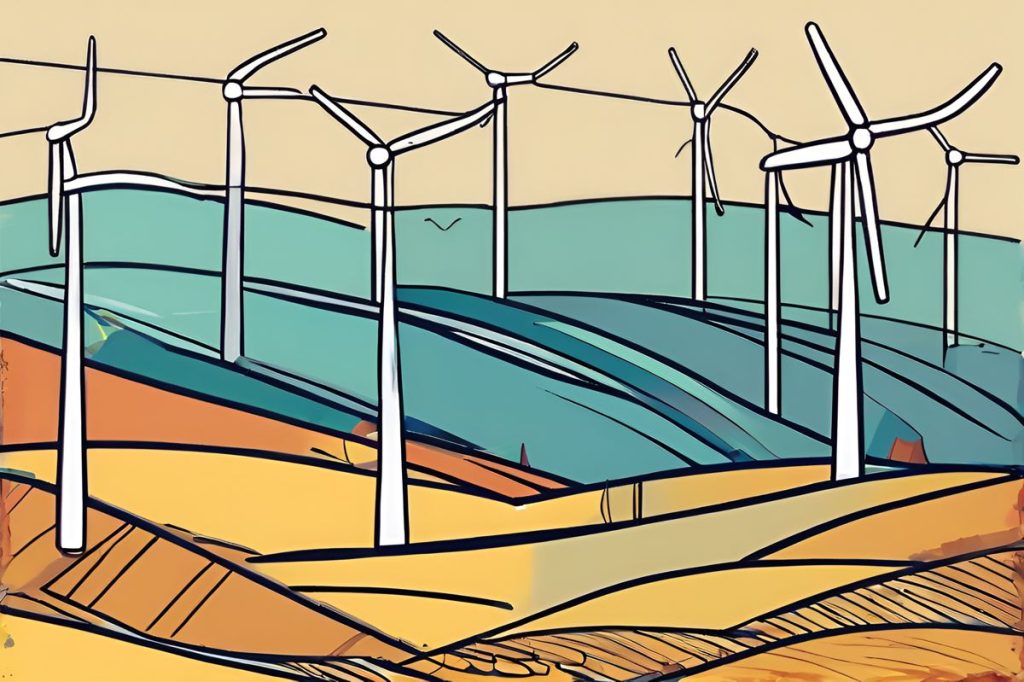Cyprus faces a daunting challenge with its high carbon emissions per capita, ranking second in the EU with 3.1 tonnes released annually. This highlights the urgent need for the island to shift towards sustainable energy sources to combat climate change and protect its delicate ecosystems.
What is Cyprus’ climate change challenge in terms of carbon emissions per capita?
Cyprus is the second-highest emitter of carbon dioxide per person within the EU, with an annual average of 3.1 tonnes per inhabitant. This figure is significantly above the EU average and highlights the island’s reliance on carbon-intensive energy sources, underscoring the need for a sustainable energy transition.
Cyprus finds itself grappling with a significant environmental challenge. Recent data reveals that the Mediterranean island ranks second in the European Union for carbon dioxide emissions per person. With an average of 3.1 tonnes released per inhabitant annually in 2023, Cyprus trails just behind the Czech Republic in this undesirable statistic. While the Czech Republic holds the top spot, Cyprus’ emissions figures are notably above the EU average, which stands at less than two tonnes per citizen.
Despite its picturesque landscapes and azure coastlines, the island’s reliance on carbon-intensive energy sources is evident. This reliance poses a threat to both local ecosystems and global climate efforts. With climate change being a pressing issue, the spotlight on Cyprus’ carbon output underscores the urgency for sustainable energy transitions.
The EU Context: Emissions and Energy Shifts
The broader European Union is making strides towards a greener future, but the progress is uneven across the member states. Poland, Germany, and Malta join Cyprus in the top five for per capita carbon emissions. Noteworthy is the fact that Malta, alongside Croatia and Lithuania, reported increased per capita emissions in 2023 compared to 2019, going against the grain of the general downward trend in the EU.
Portugal, Latvia, and Finland are leading the charge in reducing power sector carbon emissions, with Portugal achieving an impressive 52.16% reduction. In contrast, Cyprus’ power sector carbon emissions have only fallen by 6.19%, a modest accomplishment when compared to the EU average of 20.48%. These figures highlight the varied approaches and outcomes in tackling climate change within the union.
Energy Transformation: Cyprus’ Renewable Endeavors
In the pursuit of a sustainable future, Cyprus has made a considerable leap towards renewable energy. By replacing 10.12% of its fossil fuel-based energy supply with renewables, Cyprus is taking steps to shift its energy paradigm. This transition, while significant, places Cyprus twelfth in the EU’s ranking for adopting renewable energy sources.
The Netherlands outshines other EU countries with a drastic reduction of 28.86% in fossil fuel energy, mirroring the increase in renewables. The EU, on average, is experiencing a positive trend, with a 6.55% dip in fossil fuel use and a 10.23% surge in renewable source adoption. These statistics are a beacon of progress, suggesting an overall concerted effort to embrace cleaner energy forms across the continent.
Regional and Global Implications
Cyprus’ position as a high carbon emitter per capita within the EU signals a broader challenge faced by island nations and small states. Limited space, reliance on imported fossil fuels, and unique economic structures can often hinder swift transitions to renewable energy. Nevertheless, the global push towards sustainability and the adverse effects of climate change make it imperative for nations like Cyprus to innovate and intensify their efforts in curbing emissions.
As Cyprus continues to develop its renewable energy sector and explore new ways to decrease its carbon footprint, it serves as a microcosm of the global challenge. Balancing economic growth with environmental stewardship is a delicate act, but one that is increasingly recognized as crucial for the well-being of future generations and the health of our planet.
What is Cyprus’ current ranking in the EU for carbon emissions per capita?
Cyprus is the second-highest emitter of carbon dioxide per person within the EU, releasing an average of 3.1 tonnes per inhabitant annually. This places Cyprus behind the Czech Republic in terms of carbon emissions per capita.
How does Cyprus compare to other EU countries in terms of reducing power sector carbon emissions?
Cyprus has only achieved a 6.19% reduction in power sector carbon emissions, which is relatively modest compared to other EU countries. For example, Portugal has successfully reduced power sector carbon emissions by 52.16%, leading the way in this aspect of environmental efforts.
What percentage of Cyprus’ energy supply comes from renewable sources?
Cyprus has replaced 10.12% of its fossil fuel-based energy supply with renewables, showing a significant shift towards more sustainable energy sources. However, this places Cyprus twelfth in the EU ranking for adopting renewable energy sources.
What are the challenges faced by Cyprus and other small states in transitioning to renewable energy sources?
Island nations and small states like Cyprus face challenges such as limited space, reliance on imported fossil fuels, and unique economic structures that hinder swift transitions to renewable energy. Despite these obstacles, the global push towards sustainability and the need to combat climate change emphasize the importance of intensifying efforts to reduce emissions and embrace cleaner energy forms.

